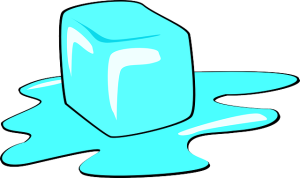Purpose
To assess growth in students’ understanding of the particle model of matter and how the model explains conservation of weight during phase change.
Description
Revisit the super strong glasses scenario from Student Experience 1. Using this task sheet, have students again draw what they would see in the ice cube and liquid if they had super strong glasses, more powerful than the most powerful microscope. [Task instructions for pilot teachers.]
Questions to Ask Students
- Describe what’s in your drawing. What does each part represent?
- How is this drawing different from your last one?
- How is this drawing different from your first one (the ice cube in the lunchbox)?
- How could you use what you just drew to explain your prediction about what happened to the weight of the ice cube after it melted?
Student Thinking
The simulation may not convince all students that matter is made of particles. Look carefully at students’ new drawings to see if they have kept some of their earlier ideas.
- Some students may still believe that matter (in this case water) is continuous rather than made up of particles (in this case water molecules) (Benson et al., 1993; Nakhleh & Samarapungavan, 1999; Renström et al., 1990; Séré, 1986). These students are likely not to include water particles, or any other kind of particles, in their drawings.
- Students may also still think particles are IN substances (water particles in a body of water) (Beerenwinkel, Parchmann, & Gräsel, 2011; Lee et al., 1993; Novick & Nussbaum, 1978, 1981), which should also be evident in their drawings.
- Students may still think that there is NO space between particles (Benson et al., 1993; Özmen, 2011; Özmen & Kenan, 2007).
- Students may still not understand that the particles are constantly moving, even in ice (Herrmann-Abell & DeBoer, 2011; Lee et al., 1993).
Implementation Tip
Challenge students to add more detail than they included in their first drawing, even those students who included particles the first time.
